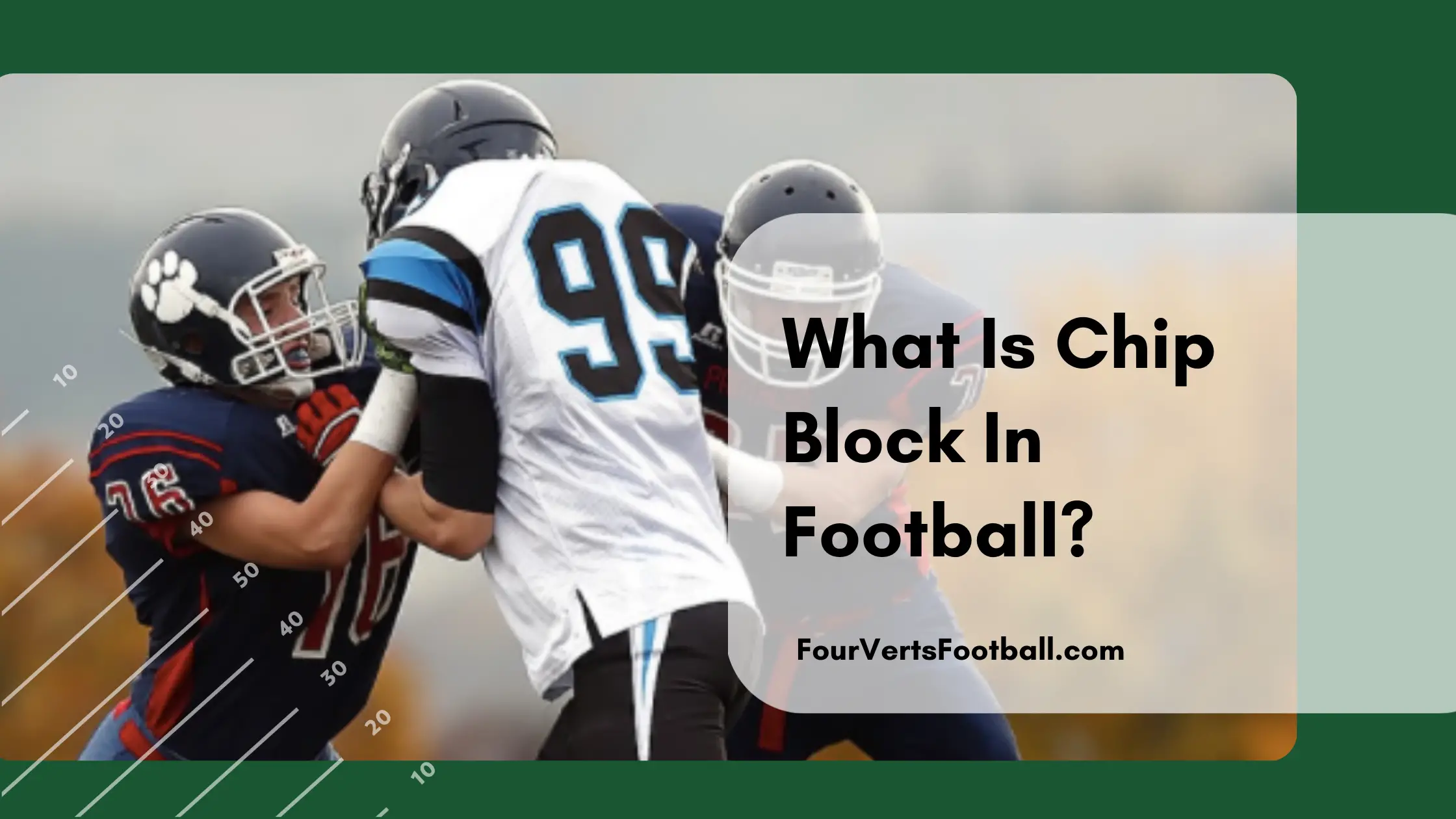When pass rushers become too much for a single lineman to handle teams need a way to give their quarterback some extra protection. This is where chip blocks come in.
A chip block in football is a quick block usually executed by a running back or tight end prior to running a receiving route.
A chip block will look like a shove or body check by the blocking player. This technique allows the blocker to knock the pass rusher off their path without having to come to a full stop.
In most cases, chip blocks are going to be performed on defensive ends trying to rush around the offensive tackle position. As they attempt to get around the outside the tight end or running back will meet them there.
The quick chip block should knock the pass rusher off balance. This makes the offensive tackle’s job much easier as the defender has now been double-teamed.
The downside of a chip block is that it will delay the blockers route for a second or two. This is why these offensive players only tend to chip block once a pass rusher has become a problem for the offense.
Benefits Of A Chip Block
Now that you know what a chip block is in football let’s break down some of the key uses a team will get out of this strategy.
Slowing The Edge Rusher
The main benefit of executing a chip block is that it is going to slow down the pass rusher. Whether or not you get a good block off or not a chip block is always going to slow the defenseive lineman down a little bit.
In a game like football, a few seconds of time to pass the ball is more than enough to make a good throw. By simply slowing down the opposing pass rusher you are going to give your quarterback a much better chance of completing a pass.
And since the lineman knows he is going to get help on the outside he can cheat to the inside to ensure he does not get in that direction.
Overall adding this chip block gives the tackle a much better chance at neutralizing the pass rush.
Feigning As A Blocker
One extra benefit of a chip block is that it can potentially help running backs and tight ends get open. On some plays, the defenders covering the tight end or running back will watch to see if they are playing pass protection.
If they are protecting the quarterback the defender will not have to worry about covering them. On a play like this, the first second of blocking may trick the defenders into leaving them uncovered.
The blocker can then leak out of the formation and get open for an easy pass. This is not always the case on these plays but it can be effective depending on the opposing team’s defense.
Potential Pancake Block
Another added benefit of chip blocks in football is the potential for a pancake block. It’s one thing to stop a pass rush but to put the defender on their back is a whole different story.
If you are able to eliminate a pass rusher for the play it not only buys you a lot of time but also opens up the opportunity to scramble to that side of the field.
Pancake blocks are more likely on a chip blocking play as the second block is often able to get a free shot on the pass rusher.
Oftentimes the defensive end will be tied up with the tackle to start the play. As the tight end comes around the tackle he will have a free shot on the side of the defensive end.
Since he is hitting the player from a different direction he has a much higher chance of getting him off balance and delivering a pancake block.
Other styles of blocks like the chip block include lead blocking or dangerous chop blocks.

